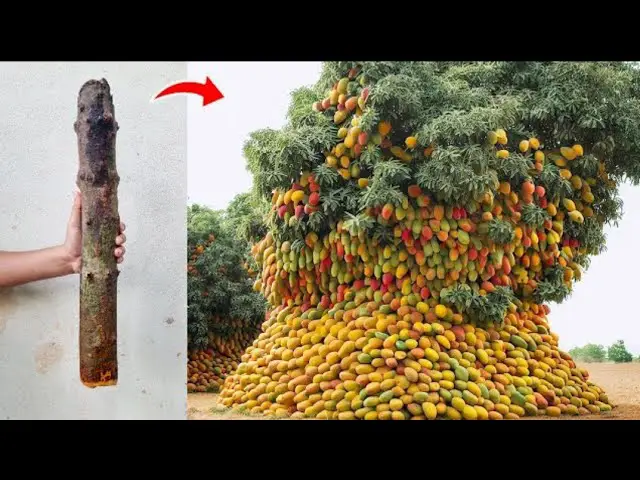Are you eager to enjoy the fruits of your mango tree sooner rather than later? Grafting offers a promising solution to expedite fruit production. Follow these simple steps to graft your mango tree and shorten the time it takes to yield delicious mangoes:
Materials Needed:
- Healthy mango tree (rootstock)
- Mango scion (desired mango variety)
- Sharp knife or blade
- Grafting tape or rubber bands
- Potting soil (optional)
- Small pots or containers (optional)
- Watering can or spray bottle
Step 1: Choose Your Scion Select a healthy mango scion, preferably from a tree known for producing high-quality fruits. Choose a scion with desirable characteristics such as flavor, size, and disease resistance.
Step 2: Prepare the Rootstock Identify a healthy branch on your mango tree that serves as the rootstock for grafting. Use a sharp knife or blade to make a clean, diagonal cut at the desired location on the rootstock branch.
Step 3: Prepare the Scion Trim the selected mango scion to a length of 6 to 8 inches, ensuring that it has at least three buds. Make a matching diagonal cut on the lower end of the scion to create a smooth surface for grafting.
Step 4: Graft the Scion Carefully insert the cut end of the scion into the cut on the rootstock branch, ensuring that the cambium layers of both pieces align. Secure the graft with grafting tape or rubber bands to hold it in place.
Step 5: Provide Support To ensure the success of the graft, provide support for the grafted area by tying the scion to the rootstock branch with soft material such as twine or cloth.
Step 6: Protect the Graft Shield the grafted area from direct sunlight and harsh weather conditions by wrapping it with a protective material such as aluminum foil or plastic wrap. This helps prevent desiccation and promotes healing.
Step 7: Monitor and Maintain Keep a close eye on the grafted mango tree for signs of growth and development. Water the tree regularly to keep the soil moist but not waterlogged, and provide adequate nutrients for healthy growth.
Step 8: Transplant as Needed Once the graft has successfully taken and the tree shows signs of vigorous growth, you can transplant it into a larger pot or directly into the ground, depending on your preferences and space availability.
Step 9: Patience and Care While grafting can accelerate fruit production, it still requires patience and diligent care. Continue to nurture your grafted mango tree with proper watering, fertilization, and pest control practices.
Step 10: Enjoy the Fruits of Your Labor Congratulations! You have successfully grafted your mango tree to expedite fruit production. With proper care and maintenance, you can look forward to enjoying delicious mangoes in a shorter time frame than traditional methods would allow.
By following these steps and exercising patience and care, you can successfully graft your mango tree to achieve fruit production in a shorter time span. Happy grafting and enjoy the bountiful harvest of mangoes!
